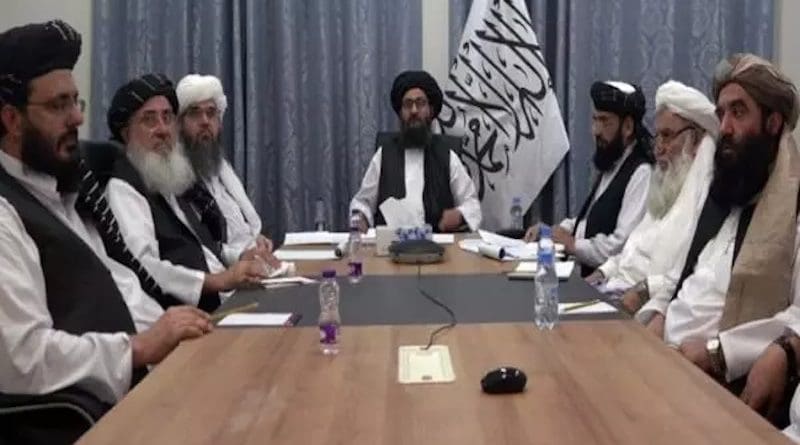Would ‘Reformed’ Taliban Respect Other Religions, Cultural Heritage And Non-Believers? – OpEd
By IDN
By Sugeeswara Senadhira
The Taliban’s fanatical yearning to attack everything opposed to what they mistakenly believe as Islam was displayed in two acts of destruction in the year 2001. The return of Taliban as rulers of Afghanistan raise question whether the remaining remnants of a Buddhist civilization in the region would be wiped out in coming years.
During Taliban rule in Afghanistan from 1996 to 2001, the most ruthless act of political vengeance by the Islamic extremist group al Qaeda was the suicide attack by 19 religious fanatics on several targets in the United States on September 11, 2001 killing more than 3,000 persons and injuring many others.
Another attack in the same year, though not claimed any human lives, had destroyed the two giant Buddha statues of Bamiyan and it was described as the most spectacular attack against the historical and cultural heritage of Afghanistan committed during the Taliban rule. On 26 February 2001, the Taliban fanatics, then headed by Mullah Muhammad Omar, issued an ‘ulama’ decree ordering the elimination of all non-Islamic statues and sanctuaries in Afghanistan.
That was followed by launching what they called a jihad against the two Buddha statues, the one to the east 38 metres high, and the other to the west, 55 metres high, hewn into the cliff of Bamiyan.
It took several days for the fanatics to destroy the world’s tallest Buddha statues. Taliban spokesman described the difficult task with the words, “Our soldiers are working hard; they are using all available arms against them.” Rockets and tank shells were brought in to help, and the destruction was completed with dynamite. On March 14, the Taliban issued a public announcement that the giant Buddha statues had been destroyed.
The Taliban rule was marked by its strict and unwavering adherence to the medievalist version of Islam and its intolerance towards non-believers, idol worshippers and even idols. Hence, the then government hailed the destruction of Bamiyan Buddha statues. Furthermore, moderate Muslims who failed to comply with the Taliban’s tyrannical interpretations of Islam views, were humiliated and punished, and in some cases even killed.
Similarly, the non-Muslims in Afghanistan lived under constant fear of persecution in the Taliban regime. The destructive acts of Taliban had shocked the world, including moderate Muslims. Mullah Omar’s decree to destroy Bamiyan statues had prompted many attempts by countries across the world and moderate Muslim clerics and heads of state from among Afghanistan’s neighbours to stop its implementation. The need to preserve a cultural heritage and to respect religious tolerance was at the core of their plea. UNESCO emissaries pleaded in vain that a necessary distinction should be made between idolatry and exemplarity, between a secular admiration and an idolatrous veneration.
The UN General Assembly passed a resolution urging Kabul government not to destroy Bamiyan Buddha statues. Sri Lanka’s permanent representative, John De Saram praised the universality of the General Assembly plea. “It was Germany, not a Buddhist country that brought the draft resolution to the floor. It was the Buddha that moved the warrior emperor Asoka to turn from violence, the same Emperor who sent his children to Sri Lanka. Sri Lanka could only hope and pray that the statues in Bamiyan would not be destroyed.” He pledged his country’s cooperation in any international effort to save the historical monuments. The resolution, of course, had Sri Lanka’s wholehearted support.
But their pleas were ignored by the fanatic rulers in Kabul. Their argument was that there were no Buddhists in Afghanistan, hence the Bamiyan Buddha statues were not a place of religious worship. “If the statues were objects of cult for an Afghan minority, we would have to respect their belief and its objects, but we don’t have a single Buddhist in Afghanistan,” said the Mullah, “so why preserve these idols? If they have no religious character, why get so upset? It is just a question of breaking stones,” he said defending the destruction of the world cultural and religious heritage, built in the 6th Century, when Buddhism flourished in the entire region. For 1,400 years, two colossal figures of the Buddha overlooked the fertile Bamiyan Valley on the Silk Road in Afghanistan, author Llwelyn Morgan said in ‘The Buddhas of Bamiyan’.
“Witness to a melting pot of passing monks, merchants, and armies, the Buddhas embodied the intersection of East and West, and their destruction by the Taliban in 2001 provoked international outrage.” Carved in the sixth and seventh centuries, the Buddhas represented a confluence of religious and artistic traditions from India, China, Central Asia, and Iran, and even an echo of Greek influence brought by Alexander the Great’s armies.
By the time Genghis Khan destroyed the town of Bamiyan six centuries later, Islam had replaced Buddhism as the local religion, and the Buddhas were celebrated as wonders of the Islamic world. Not until the nineteenth century did these figures come to the attention of Westerners.
That is also the historical moment when the ground was laid for many of Afghanistan’s current problems, including the rise of the Taliban and the oppression of the Hazara people of Bamiyan, the author lamented.
As Taliban took control in Afghanistan last week, UNESCO expressed concern about the remaining art heritages in the country. The fears centre on the 800,000 art objects currently held in the collection of Afghan’s National Museum. “We have great concerns for the safety of our staff and collections,” said Mohammad Fahim Rahimi, the institution’s director.
At present, there is no plan for moving the items out of harm’s way. “The question is how to find a safe location. There is no way for them, or the staffs, to leave the country. We didn’t expect this to happen so quickly,” Noor Agha Noori, head of Afghanistan’s Institute of Archaeology in Kabul lamented.

